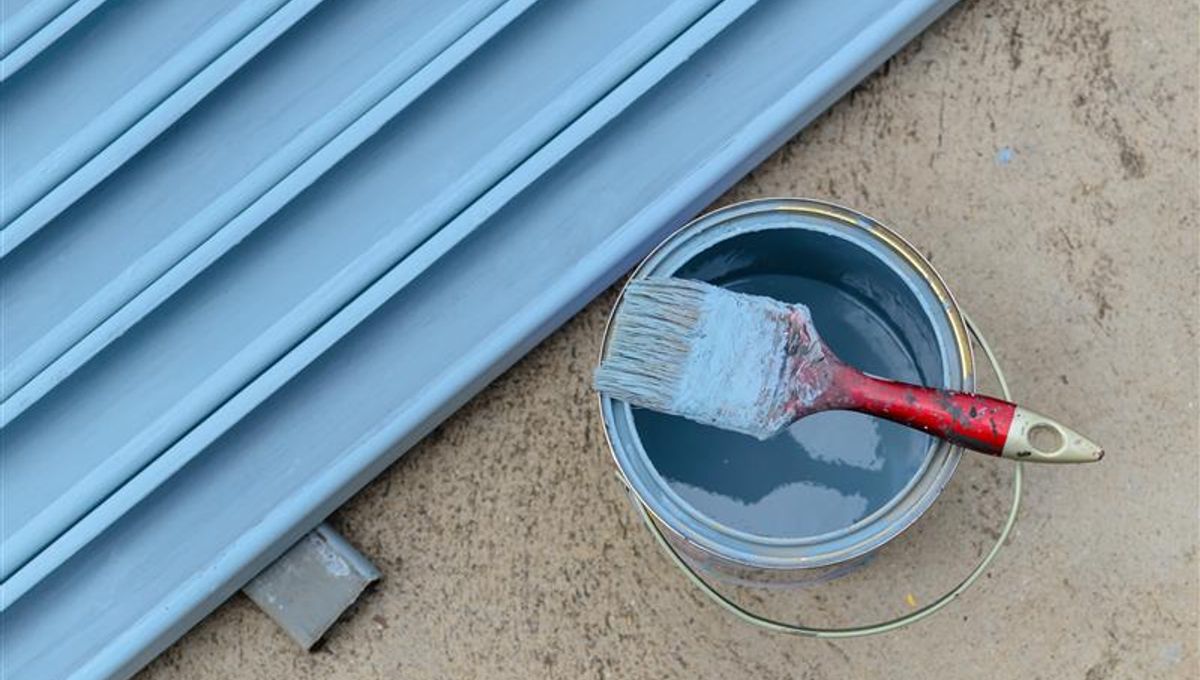
Imagine this: it’s the summer and you’ve just been painting your garden fence when it starts to rain. At the same time, and not too far away, a friend has just finished doing the same, but their weather is far nicer, so their freshly painted fence is surrounded by dry conditions. Which fence will dry quicker? Instinctively, we might say the latter because there’s less humidity – but we’d be wrong, and new research has verified why.
In a new study, researchers have tested a theory as to why the evaporation rate of water or other solvents in a polymer solution, such as paint, can be independent of the ambient humidity.
The experiments show that, as water evaporates from the paint, the polymer molecules are driven towards the surface where they form a dense layer. This skin-like surface essentially slows evaporation while shielding the paint from the effects of humidity.
And while this may seem like a basic answer that means little beyond home decoration, the implications may also extend to something completely unrelated – viruses.
Of fences and microbes
Humidity-independent evaporation offers advantages in many situations. For example, our own skin helps maintain a nearly constant evaporation rate that preserves hydration. This is caused by our skin cell membranes whose lipid molecules can change to adjust the rate that sweat evaporates. But this is an active response that takes place in our bodies as needed. Could there also be an inactive version?
In 2017, a chemical engineer at the University of Bordeaux, France, proposed the hypothesis that humidity-independent evaporation does not necessarily require an active response. According to Jean-Baptiste Salmon, the scientist in question, this process should occur whenever the solvent evaporates from a solution of large molecules, which is already known to draw those molecules towards the drying surface.
According to Salmon’s predictions, after the large molecules form the dense layer, the solution’s evaporation rate should remain constant regardless of whether the surrounding conditions are bone dry or at 100 percent humidity.
“We wanted to know whether this [hypothesis] might have implications for the evaporation of respiratory virus droplets, which also contain high-molecular-weight polymers,” Max Huisman, a soft matter physics graduate student at the University of Edinburgh, UK, said in a statement.
Existing models on viral spread neglect the role biopolymers have in droplet evaporation. This is because these molecules are not expected to perform an active process, like human skin cells do.
So the Edinburgh team set about testing Salmon’s hypothesis with a straightforward, nonactive and nonbiological polymer solution, and to examine the parameter ranges through which it applies.
To test this process, the team built an apparatus that measures evaporation rates in a common water-polymer solution (polyvinyl alcohol, or PVA) at different levels of humidity.
The apparatus consisted of a cylindrical plastic reservoir with five holes bored into its walls. These were filled with a solution (PVA) while glass capillary tubes were attached to each hole. These tubes were rectangular and extended horizontally away from the reservoir.
To ensure evaporation occurred at the protruding ends of the tubes, they added a layer of oil on the top surface of the solution. The reservoir then sat on a scale within a humidity-controlled box. The team held humidity at values between 25 and 90 percent and then monitored the water mass lost from the reservoir. These experiments each took 17 hours to perform.
In each experiment, the evaporation remained consistent for about three hours but then fell as the polymer layer built up at the surface, just as Salmon had hypothesized.
However, the experiment added two new insights to the original hypothesis. Firstly, the early-stage constant evaporation rate – which occurred before the protected skin formed – did not decrease with increasing humidity. Secondly, after the first three hours, the evaporation rate fell – which was expected – but it was only independent of humidity at humidity values up to 80 percent. Above this, the evaporation rate decreases with increasing humidity, suggesting other forces are at work as well.
According to microscope analysis, the solution had formed an additional layer of gel skin that further reduced the ability of water molecules to reach the surface, an extra layer that Salmon had not foreseen. Similar gel skins have recently been observed at the surface of respiratory droplets, so this process may be apparent in biopolymers as well.
Who would have thought paint drying was so interesting?
The study is published in Physical Review Letters.
Source Link: Why Doesn’t Paint Dry Faster On Dry Days Than On Wet Ones?